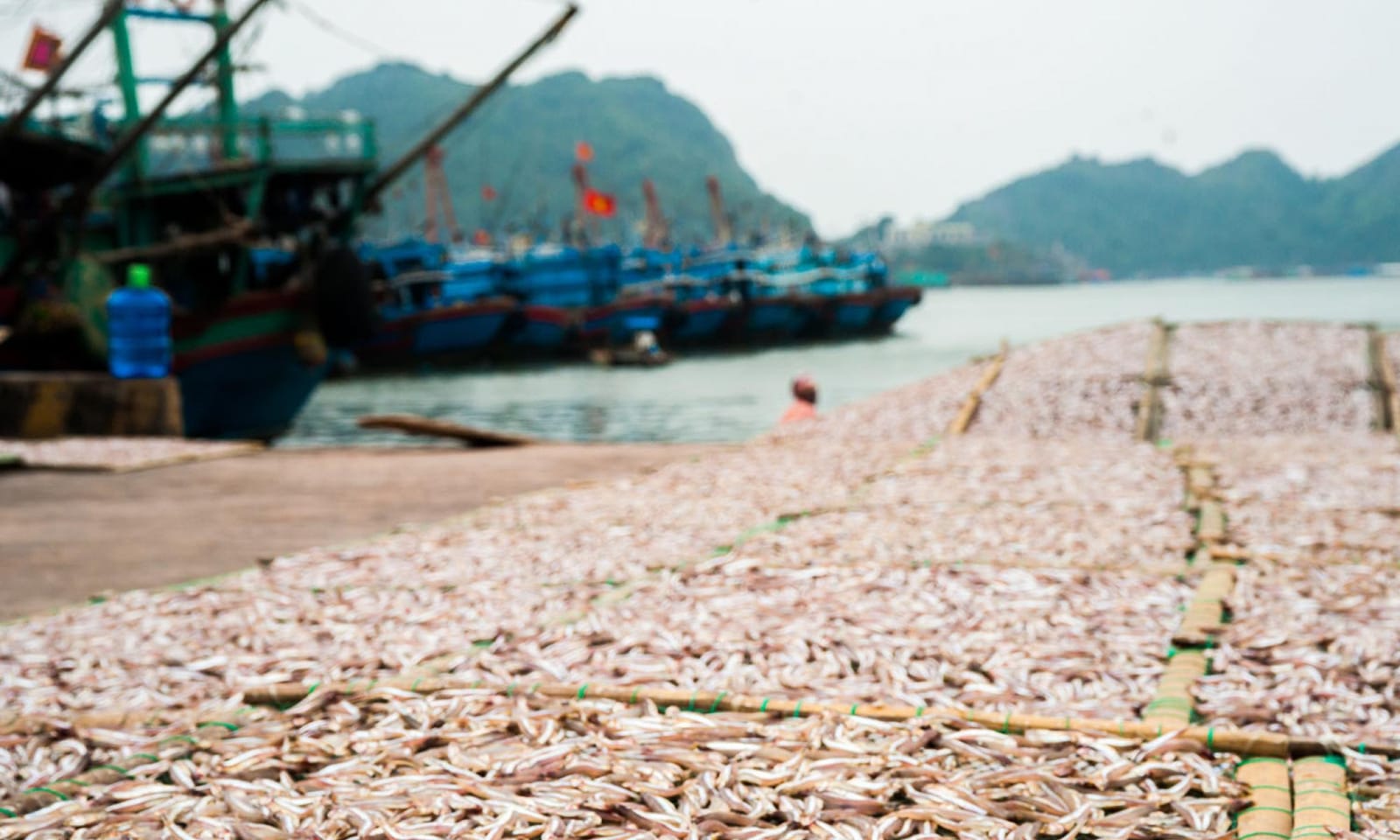Modern problems require modern solutions. The new frontier of solution-based innovation lies in the field of biotechnology. Bioinnovators: The Humans At The Forefront Of Biotech is a series of interviews with the organisations and entrepreneurs at the forefront of changing the world through biotechnology. With each interview, we hope to shine the light on conscious innovators and trailblazers across the globe who are using the natural world, combined with modern technological innovations, to find new solutions to the world’s most pressing problems.
Silicon Valley startup NovoNutrients turns industrial carbon dioxide emissions, cheap hydrogen and naturally occurring microbes into nutritious products for animal and human consumption. The company makes protein flour, which it calls “Novomeal, an all-natural, non-GMO, complete protein, with all the amino acids found in meat, but with considerably lessened impacts on wildlife, land, and water.” NovoNutrients is on track to becoming one of the world’s biggest suppliers of innovative protein ingredients by 2030. We spoke to David Tze, the CEO of NovoNutrients to discuss recent developments in the production of alternative proteins at scale.
We are interviewing you for our theme Biotech For Change, so how do you personally understand the term ‘biotechnology’?
For me, biotechnology means when humans scientifically change the way that biology operates, instead of using biology as it occurs naturally.
How do NovoNutrients produce alternative protein from carbon dioxide emissions? What innovative technologies are involved?
NovoNutrients produces alternative protein from carbon dioxide emissions and other inexpensive industrial gases like hydrogen. And these gases don’t have to be in pure form; we specialise in using the mixed gases that are the reality of most availability of these gases. The innovative technologies are both biological as well as the hardware, bioprocess, the steel on the ground. The biological innovations are around the use of consortia, which is to say multiple species and strains of bacteria and other microbes working together in such a way that the whole is greater than the sum of the parts. We also have an expression model to allow biomanufacturing of specific biochemicals for food additives. And finally, in terms of the bioprocess, we have entire systems, but the most unconventional aspect are the bioreactors, the fermentors, which are of our own design using the gas loop concept.
How did you end up at the forefront of the synthetic biology (SynBio) revolution?
I came to synthetic biology through something of a circuitous route—in fact, I’m on the business side of biology, not on the scientific side. For me, it was really my dozen plus years as an investor who was specialising in animal nutrition and aquaculture that brought me to the form of protein production that we have here and our use of synthetic biology, both through genetic modification and non-GMO forms, that enables us to produce more and better products.
What are the benefits (environmental, economic, social) of protein flour? What would these look like at scale and if protein flour was in widespread use globally?
NovoNutrients protein flour has significant environmental, economic and social benefits. Environmentally, we’re talking about actually upcycling about 2.2 kilos of CO2 for every kilo of protein-rich biomass product that we’re making. Economically, we think we can create the same or higher value products than the legacy conventional ingredients at a lower cost. And finally, socially, our products are healthier for people and don’t come with the attendant issues associated with meat production. So at scale, we’re really talking about a world in which when we go into a grocery store, many of the protein products contain a single cell protein or a derived ingredient like what we’re talking about producing.
The other benefit of the use of the NovoNutrients protein is just how much carbon dioxide can be upcycled in this way. So we’re really talking about the possibility of gigatons over years, which is a meaningful fraction.
What is the market cost of protein flour compared to traditional proteins? How is this likely to change over time?
When we compare, at commercial scale, the likely cost of NovoNutrients protein flour to traditional proteins, it’s worth looking at two specific traditional proteins: one for feed use and one for food use. From a feed perspective, the comparable, very roughly, is what’s called fish meal or sometimes fish flour. This is a product that you get when you capture millions of tons a year of wild anchovy fish and grind them up and press them out and the protein component is the fish meal and that’s what we would compete with in making feed grade products. In making food grade products, we would be competing with things like pea protein isolate which has gained some notice certainly in its inclusion in Beyond products. In terms of the actual cost difference, we anticipate having a production cost of around 1,000 USD per ton at scale. And today, these other products have a price for high quality high grade fish meal between 1,500 and 2,000 USD a ton, and for pea protein isolate between 4,000 and 4,500 USD a ton. Over time, this will certainly change; we would anticipate the fish meal to go up and the cost of pea protein isolate to go down and then plateau because of the supply-demand constraints and factors in each of those cases. As far as NovoNutrients' protein goes, our costs should go down over time and of course we’re not at commercial scale yet, so at lab scale it’s something that’s quite expensive to manufacture. But as you scale up, it becomes cheaper and cheaper.
How can NovoNutrients transform seafood farming and address issues of cost and feed diversity?
We expect to have a significant impact on seafood farming as our feed ingredients become integrated into the formulated feed that feed mills make to sell to farmers and in turn use to feed the fish or shrimp in question. And for us, the transformation is really about the cost, sustainability and quality of the feed and the feeding. And so, because we anticipate offering higher protein value and additional vitamins and other beneficial nutritional qualities at a lower cost than a high grade fish meal, this would mean that we would get an increasingly substantial inclusion rate in the diets; you know, perhaps we would be able to replace the average of 10 percent fish meal used in aquaculture feeds today. And of course, it’s also a source of diversity in feeds; it’s a whole range of additional ingredients—multiple NovoNutrients ingredients and of course representative of the broader category of microbial protein ingredients—that makes for a more resilient system as well as a more economically and environmentally efficient one.
Are fish and animals fed by alternative proteins healthier for human consumption? If so, how? Are there any potential associated health risks?
To understand this, one has to understand the supply chain. So when animal feeds are formulated, the feed companies actually initially specify the nutritional target—something that might look a bit like the nutritional profile on the back of a processed food that you might see at the grocery store. And so they’ll say, “Look, we need a kilo of this feed,” for a particular application, whether that’s salmon farming or feed for egg-laying hens, and it has to have a certain number of grams of protein, of fat, of carbohydrates, a certain amount of vitamin B and on and on through the macro and micronutrients. And then they use what’s called the ‘lowest cost feed formulation software,’ [which looks] at their cost of inputs [in] a database of ingredients and additives to determine what is the lowest cost way to achieve this target. And so, in the case of alternative proteins that provide the same nutrition at a lower cost—or provide better nutrition, more valuable nutrition, at the same cost—this gives that software and those feed companies and then ultimately the fish and animals that get fed them the opportunity to be healthier without sacrificing profits. And if the participants of the value chain decide to do that, then that also benefits human consumption because people get the benefits as they [consume] the fish and animals that are being [fed the alternative proteins].
Have there been any developments in the use of alternative protein flour for use in plant-based meats and cultured animal cells? What are the benefits compared to the use of soy and pea and what would be required to scale up production?
Several companies have been testing microbial alternative protein flours used in plant-based meats and although those have not gone to any significant scale or commercialisation, we think that the results are quite promising. And this is an area that we’re becoming increasingly active in. So the benefits of NovoNutrients protein compared to the soy or the pea products that I’ve mentioned elsewhere are really, not just the nutritional benefits that have been mentioned, but also the fact that with our fermentation-based process, many of the scarce inputs that go into agriculture are not required. So minimal water that would otherwise go to irrigation, no pesticides, no herbicides and a reduced reliance or potentially no reliance on fossil fuels. So in a sense, what we’re talking about is a pillar of the human food system, of protein, that is actually decoupled from agriculture and decoupled from fossil fuels and in that way doesn’t have the disadvantages or the harms that are associated with those activities. And so this could really create significant global benefit, particularly as production scales up. Scaling up of production of an innovative process technology, particularly a bioprocess technology is always time-consuming and that’s because you start in the lab with a system that’s quite small that would be measured in litres and you have to get to commercial systems that are measured in the hundreds of thousands of litres in any given fermentation module. And that requires expertise, experience and time.
What are the major inhibitors to expansion into global large-scale industrial operations? Does NovoNutrients need government-level support for expansion? If so, what would it look like?
Getting to global large-scale operations requires time; it requires capital; and it requires an acceptance and an approach to risk and mitigating risk. We think that to do a 20x scale-up will often take 18 to 24 months. And in getting from the litre scale to the hundred thousand litre scale, obviously a number of 20x scale-ups are required, some of which we’ve already completed. And in each of those scale-ups, there is scaling risk as well as financing risk. Scaling risk is around the fact that there’s no linear scaling from equipment available at any particular scale like lab-scale versus pilot-scale versus demo scale versus commercial scale. You can’t just get a bigger widget and put that in your engineering design; you might need to use something that operates quite differently to achieve the desired effect, and there’s a risk that that may be difficult or expensive or untested or delaying in terms of designing or building. And so that’s really what scaling risk is about. In terms of financing risk, here we’re talking about the fact that these pilot and demo scale facilities, in some cases, can be profitable, particularly at demo scale, but in many cases and settings where commercial-scale would make a lot of sense, the pilot and the demo will not be profitable and therefore there isn’t a purely short-term financial incentive for anyone to invest in these types of plants. The purpose of these plants is really to demonstrate that the systems work and justify moving on to the next larger scale. And so it takes—I don’t want to say just visionary—but certainly longer time horizon, higher risk tolerance partners who are in many cases interested in securing a supply of these rare and economical ingredients. It could also come from government, although government tends to be slow and more uncertain as a source of funding for truly early-stage companies and really innovative technologies that are not yet widely accepted. And so, each company needs to make a decision about how to allocate its time and efforts towards various potential sources of funding. We’ve historically looked more towards venture capital, towards impact investors and towards corporate partners as opposed to government-based on some of the experiences that we’ve had. So government level support is nice to have but we don’t think, in our case at least, that it’s necessary.







